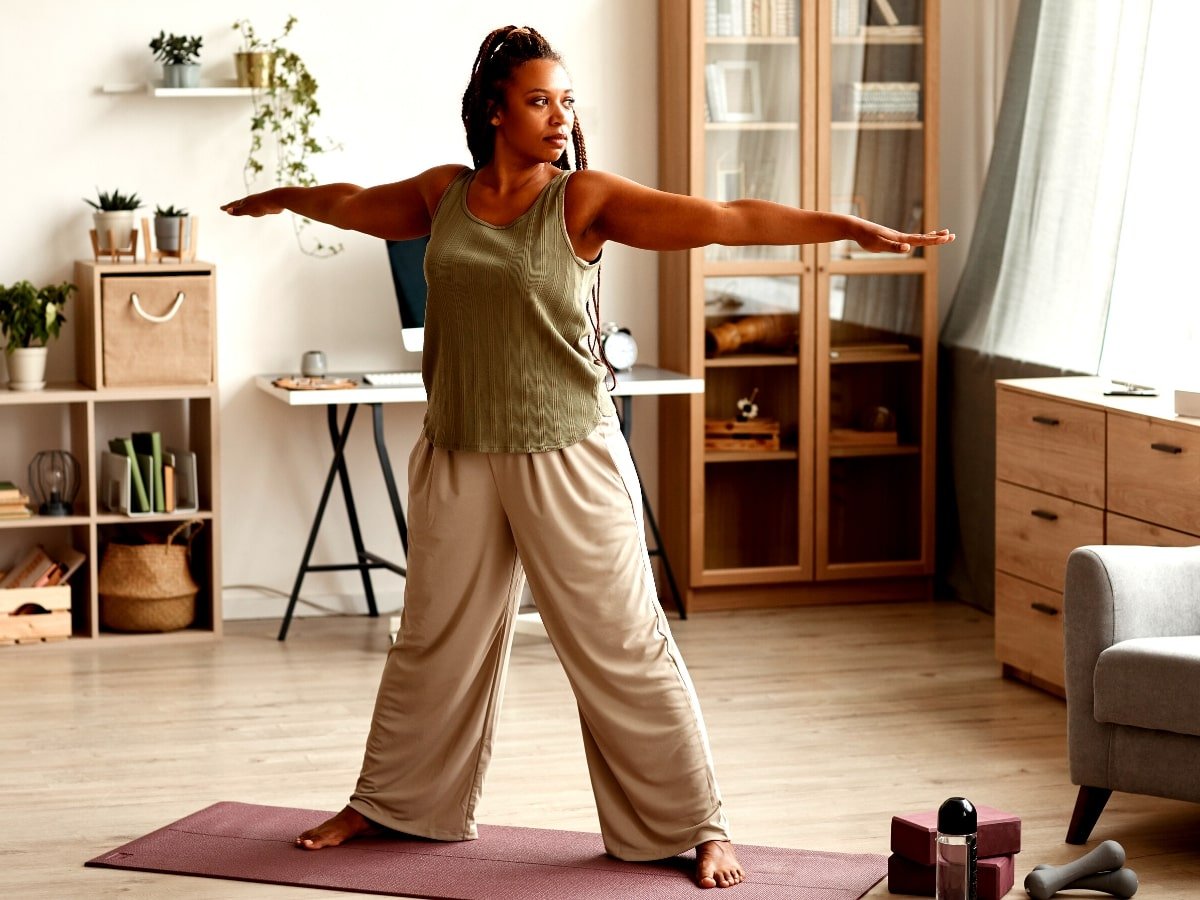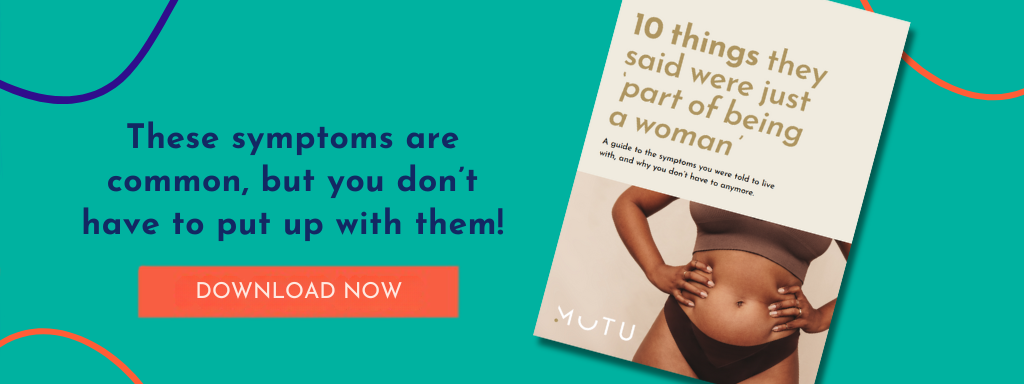Your posture affects the tone and function of your pelvic floor (how well it works to prevent incontinence). Glutes and pelvic floor muscles, as well as core strength and avoiding back pain, are all related to alignment. This means how you sit, stand, walk and carry.
How are they connected? Because to be strong, pelvic floor muscles, like any muscles, need to be able to work through their full range of motion. This means from fully contracted to fully extended.

Example: Extend your arm out straight – that’s your bicep extended. Now flex it. That’s fully contracted, ‘switched on’. If it’s already contracted, it’s got nowhere else to go.
Same with your pelvic floor. It’s got to be able to relax and release fully, in order to contract when you need it to.
If you’re sitting, standing or moving in poor posture, your pelvic floor muscles can’t extend or release. They can’t be strong. When your tailbone is tucked under, it has shortened the distance between the front and back of your pelvic floor muscles. Untuck your bum for a stronger pelvic floor (and a perkier backside!).

How to stand for good posture for your pelvic floor
Standing in bare feet, check in that your weight is through your heels, not the balls of your feet. You should be able to lift your toes and your butt should curve out. Don’t tuck your tailbone.

Check yourself as you stand. If your weight is rocked forward, kind of in ‘standing to attention’, rock back a little. Weight down through heels and mid-foot. Lift your arches.
Note: you won’t be able to do this if you’re wearing shoes with any heel at all… so take your shoes off.
Stand side-on to the mirror to look. Weight should be through your heels, tension out of your knees, butt free and unclenched.
Carrying something or someone? Hold her close in to your body and notice what your butt is doing. Do you tuck under? Try releasing your backside and your tailbone.
Most of us favour one side when we carry our kids. Notice, and alternate sides. Even better, carry to the front or on your back.
How to sit for good posture for your pelvic floor
Often when we sit, we are slumped back on our tailbone. A squishy sofa, the seat of your car… often our natural seated position has tucked our butt without even realising. If you’re sitting now, slump right back. Notice how you’re sitting on your tailbone? It’s right underneath you. Now sit forwards and let your tailbone be free. Don’t stick your chest out, just shift your pelvis so you’re sitting upright. Feel for your sitz bones – right in under the flesh of your buttocks. You want to sit on those, not on your tail.
Try to vary how and where you sit too. Try sitting on the floor more, using a yoga block or firm pillow under the back of your bum so you can sit in neutral spine without slumping.
How to walk with good posture for your pelvic floor

Walking outside is a a big part of our lifestyle at MUTU. Wherever you live, whatever the weather, there really is no better exercise for your whole body, including your mental health.
Point feet forwards, the way you’re going
When you walk, look down and see which way your feet are facing. If they’re turned out to the sides, point them forwards, the way you’re going. When we turn our feet out to walk, ‘duck’ style, this actually compromises both pelvic floor and glute function.
Push off from your toes as you walk
Good walking posture drives you forwards from your glutes and hamstrings, ie the backs of your hips and legs do the work. This often means a shift in our habits, as we tend to ‘pull’ forwards from the fronts of our thighs, rather than ‘push’ from the back. Try this: Really push off from your bent toes as you walk and be aware of your glutes engaging a little as you propel forwards.
Straighten up your body and be aware of your muscles
Try to straighten up your body a little and be aware of your hamstrings and butt muscles working. This will improve both pelvic floor and glute tone.
More on walking with children and baby carrying here from one of our MUTU pro alignment experts, Beth.












